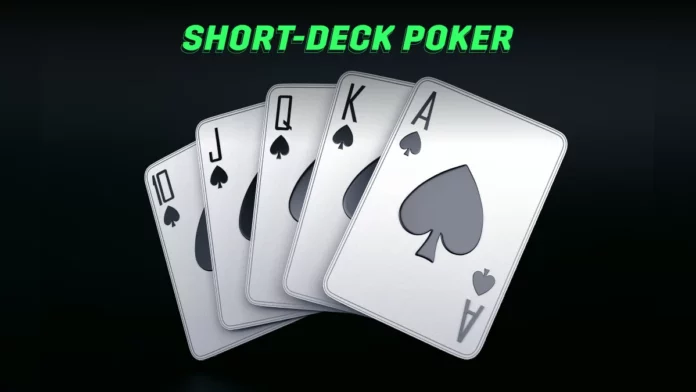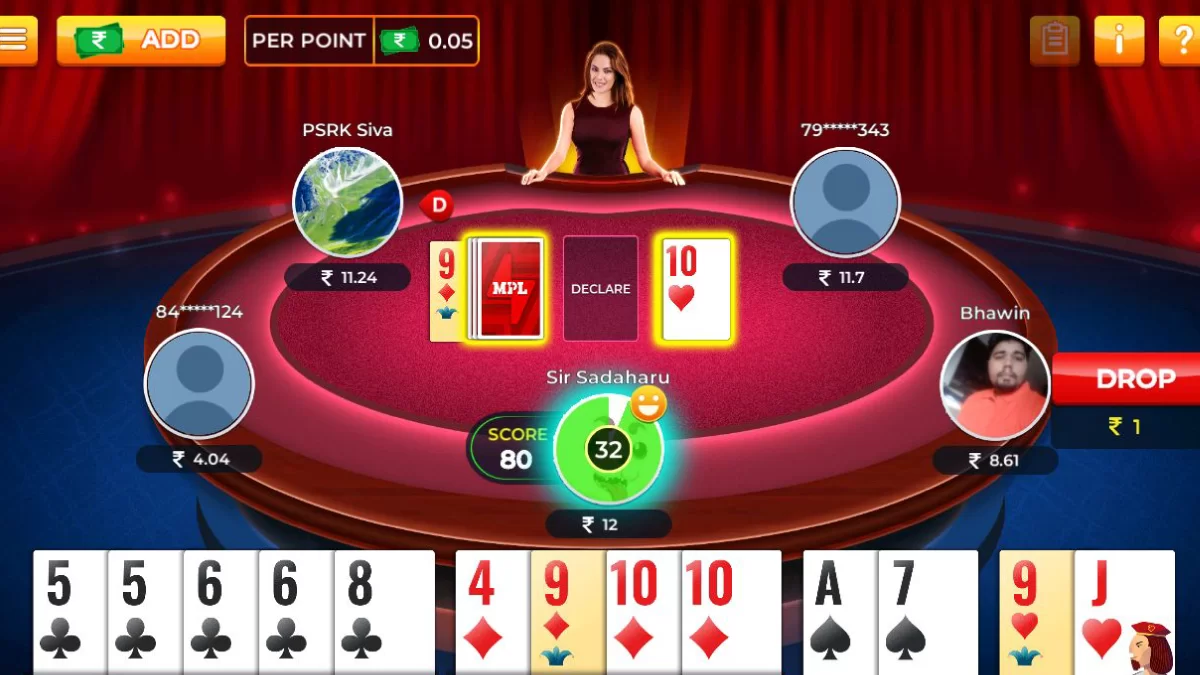The short-deck poker game, also known as six-plus hold ’em, has gained rapid popularity in the high-stakes games through the last few years. Poker players from around the world play cash games and tournaments in the short-deck poker format. Short-deck poker is a fun alternative for Texas Hold’em as it offers a lot of action and big hands.
While the poker beginners may not have much idea about the rules and gameplay of short-deck poker, the poker pros who have tried a hand at this format wouldn’t take much time to dominate the table with several tips and tricks. Let’s take a look at what short-deck poker is and the essential tips and tricks that experienced players, as well as poker novices, can use to dominate a short-deck poker table.
What is Short-Deck Poker?
Short-deck poker is an alternative to Texas Hold’em with the difference that it is played with a 36-card deck. The game derives its name from the 36-card deck, a shorter deck that includes all cards from sixes and above. The deuces, threes, fours, and fives are removed from the standard deck to play this game.
Due to this shorter deck, the hand rankings and strategy are quite different in short-deck poker. However, the gameplay and betting remain similar to Texas Hold’em. The cards are dealt in a similar fashion, but the shorter deck significantly impacts hand rankings. For instance, the top pair in Texas Hold’em can be strong, but the top pair can be weak in short-deck poker due to the many draws.
Also Read: Learn How To Play On A Short-Handed Poker Table
Short-Deck Poker Hand Rankings & Rules
As opposed to Texas Hold’em, the hand rankings in Short-Deck Poker differ slightly. For instance, a Flush beats a Full House, and a set can beat a straight in some variations of the game. You must learn the below short-deck poker hand rankings if you want to dominate the table:
| 1. Royal Flush |
| 2. Straight Flush |
| 3. Four of a Kind |
| 4. Flush |
| 5. Full House |
| 6. Straight |
| 7. Three of a Kind |
| 8. Two Pair |
| 9. One Pair |
| 10. High Card |
Short-Deck Poker Rules
Before you start playing short-deck poker, you must learn all the rules of the game. Here are several rules you should keep in mind:
- The game uses only 36 cards from a standard deck of 52 cards. The deuces, threes, fours, and fives are removed, making six the lowest card.
- The game is played between 2 to 10 players, with the usual number of players being 6.
- The hand rankings in short-deck poker are re-worked due to the higher chances of hitting certain hands such as straights or sets.
- Aces are included in high and low but they also substitue the fives, like in 9-8-7-6-A.
Strategies To Dominate Short-Deck Poker Table
Being a relatively new game, the perfect short-deck poker strategy is still unknown. Besides learning the adjusted hand rankings and understanding all the rules of this format, here are a few essential tips and tricks you can use to dominate the short deck tables like a pro.
Don’t Shy Away From Draws
Owing to a shorter deck and higher number of face cards in short-deck poker, the players are bound to hit a higher number of draws in the game in comparison to Hold’em. You must make the most of the draws instead of shying away.
For instance, on the flop in Texas Hold’em, you can multiply the number of outs by 4 and by 2 on the river to evaluate the percentage and improve the hand. Whereas, in short-deck poker, you can multiply the number of outs by 6 on the flop and by 3 on the river. So, when you have 10 outs on the flop, there’s a 54.8% chance to improve the hand on the turn and river.
Hitting Flush
As compared to Texas Hold’em, hitting a flush is more difficult in short-deck poker due to fewer cards in the deck. Therefore, hitting that draw with only nine cards of each suit is quite challenging. Also, in the majority of short deck plays, a flush is considered bigger than a full house. Check the house/table rules before you sit in to grind.
For instance, in Hold’em, completing a hand with a flush draw and nine cards left in the deck is easier. However, there are fewer chances of hitting that flush with only five cards in short-deck. The chances at the river are 30% and at the turn are 15% as opposed to 18% in Hold’em. The difference between the two may not seem significant, but it can cost your chip stack while calling the bets for that flush in short-deck.
Focus More on a Straight
Compared to Hold’em, straights are much more common in short-deck poker format because the deck is stripped down. This is an important tip you can use to dominate the short-deck poker table. The straight draws are way more powerful than the flush draws and are more valuable when playing aggressively.
The hand strength of an open-ended straight draw at the flop is also much higher, and the chances of making a straight by the river go all the way up to 45%. So, when you play your straight draws aggressively, you would mostly have equity even in the circumstances when your opponent calls.
Also Read: Poker Playing Styles Decoded
Ditch Big Pocket Pairs
The big pocket pairs such as AA, KK, QQ, and JJ in short-deck aren’t as powerful as they are in Texas Hold’em due to the premium cards and big draws in the deck. Therefore, ditching the big pocket pairs in short-deck poker is a trick you can include in your skillset and include suited and connecting hands instead.
Connected Hands are Strong
In short-deck poker, the connected hands such as 89, 9Ten, TenJack, or QueenJack are much stronger than in No-Limit Hold’em. 19% of the time, you may flop an open-ended straight draw with a TenJack or 9Ten, 12% of the time with a QueenJack, and 6% with a KingQueen in this format.
Don’t be Afraid to Overbet in Short-Deck Poker
Overbets are quite regular in short-deck poker, and as a poker player, you must not be afraid to overbet. While sizing the bets in Texas Hold ’em is done according to the pot, and not many players make huge bets bigger than the pot, overbetting is quite normal and recommended in short-deck poker. The poker novices will be fascinated by the number of premium hands they get in six-plus hold’em.
If you flop a big hand in short-deck, the best way to protect it is by betting big or overbetting the pot. You must also determine if your opponent is sticky or has a big draw before deciding to overbet. You can also use this trick even to bet big with your big draws and pressurize your opponents because even if they call, you would still have the equity of great hands.
Hand Equities Run Much Closer
In comparison to NLH, the hand equities run much closer in six-plus hold’em, because of which only a few hands are considered as premium hands. For instance, getting in with KK instead of an AK will not be as good as in NLH. In fact, the pocket kings are preferred by only 10% against any AK and by 6% against suited AKs because aces make frequent appearances on the river. This also changes the whole approach to the game as you will find yourself making more straights than on NLH.
Feel Free to Open-limp with a variety of hands
In six-plus hold’em you can take the liberty to open-limp with many more hands than in the classic Hold’em game. You can limp with the entire range from the initial stages to make the game more profitable.
This is because only aces, kings, and AKs are the premium hands in short-deck, and balancing the best hands with weaker ones becomes difficult, leaving open-limping a viable option.
If you raise from the initial stages with non-premium hands, you are more likely to run into a better hand as opposed to becoming too predictable while raising premiums.
Also Read: Learn how to boost your win rate in the online poker game
The Bottom Line
If you play Texas Hold’em frequently, mastering the short-hand poker game is a piece of cake. The variation in the rules makes short-deck poker a fun format where a flush can beat a full house. Keeping the above tips and tricks in mind will smoothly get you through a short-deck poker game and help you dominate the other players. Just keep in mind a few important points – suited connectors are bigger hands, and pocket pairs are good due to a higher number of draws in short-hand poker.










